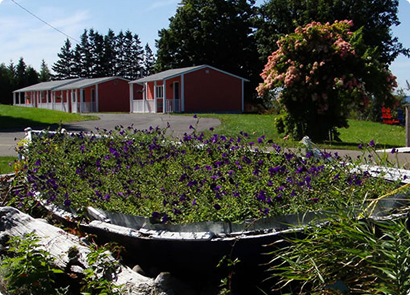Alcohol Addiction
Sobriety Home Foundation remains one of the best drug addiction treatment facilities in Canada. Located in the idyllic countryside, we provide individuals struggling with substance use disorders a variety of evidence-based addiction services and addiction treatment options. At Sobriety Home, individuals living with alcohol addiction have access to individualized recovery programs with a comprehensive rehabilitation plan. It is our goal to provide our patients with individualized evidence-based addiction treatments to move towards living an alcohol-free life. Patients at Sobriety Home Foundation can look forward to the following:
- Detoxification
- Treatment in a residential setting
- Alcohol intervention
- Rehabilitation
- SMART Recovery
Alcohol – What is it?
This is the most widely used psychoactive substance in the world after caffeine. As it happens, alcohol is heavily used by all walks of life and bears important social and cultural significance. Despite that, experts say that if it were invented today, it would be subject to strict legal restrictions due to its adverse nature.
Alcohol is created from the fermentation of sugars of fruits, grains, and vegetables. This process occurs naturally, therefore, the exact date in which it was discovered by humans is unknown. Although, archaeologists believe that wine was first created in 6400 BCE by Neolithic tribes and rice-based alcoholic beverages were invented by the Chinese in 5000 BCE. Beer and spirits were invented many years later.
The world alcohol is used to describe any compound that has a hydroxy (-OH) group attached to a hydrocarbon ring or chain by chemists. The primary alcohol in most consumer beverages is ethanol (CH3CH2OH). When sugars are fermented, they produce ethanol and carbon dioxide in abundance in addition to small amounts of other constituents known as congeners (e.g., aldehydes, esters, fatty acids, tannins). These constituents are responsible for the colourization, flavouring, and aromatizing of alcoholic beverages. Generally, darker beverages with strong aromas contain more congeners and are more likely to produce hangovers. Some commonly consumed alcoholic beverages are beer, wine, whisky, rye, vodka, and coolers, and there are thousands of variations of each.
Alcohol Addiction – What does it look like?
Addiction to this drug is referred to alcoholism or alcohol use disorder. Typically, it can be conceptualized in two ways: abuse and/or dependence. Within a clinical setting, an individual has alcoholism when they drink a large amount of it over an extended period, have difficulty cutting back, actively seeks the substance daily, neglects daily responsibilities, and as a result they have sustained social and health problems. Furthermore, these individuals experience intense symptoms of withdrawal through abstinence and build tolerance quickly. Like other drugs, this drives their continued consumption of the substance. According to the World Health Organization (2018), approximately 208 million people have alcoholism worldwide. This equates to ~4.1% of the world’s population. In Canada, 19% of the population aged 12 years or older (~5.8 million people) report heavy alcohol consumption (Statistics Canada, 2017). As it happens, these numbers seem to be concentrated in individuals aged 18-34 or in Aboriginal communities. Finally, alcoholism appears to be a greater problem for males than females
Short-Term Effects of Alcohol
- Central nervous system depression
- Possible injury from accidents by poor judgement (e.g., car crash, falls, burns, etc.)
- Poor coordination
- Possible violence
- Reduced inhibition / Impaired judgement
- Death (in cases of polysubstance use and overdose)
- Dehydration
- Headache
- Vomiting
- Slurred speech
- Distorted vision and hearing
- Black-outs (inability to recall events that occurred when under the influence of the drug)
- Excessive urination
- Anxiety
Long-Term Effects of Alcohol
- Liver disease
- Nerve damage
- Ulcers
- Mouth and throat cancer
- Sexual impairment
- High blood pressure
- Increased inter-personal problems (i.e., family and friendship problems)
- Alcohol poisoning
- Depression
- Suicide
- Stroke
- Permanent brain damage
Pharmacology
This substance passes easily through the blood-brain barrier which allows for its rapid effects. Once through the barrier, the drug interacts with neurotransmitters in the central nervous system (CNS). Alcohol attaches to GABA receptors, augmenting the effects of naturally-occurring GABA, thereby producing anti-anxiety effects and suppressing neural activity. In addition, alcohol blocks NMDA receptors which are excited by naturally-occurring glutamate. In turn, this reduces memory formation. Finally, the drug stimulates the release of serotonin and dopamine which promote elevated mood and relaxation and stimulate the brain’s reward pathway respectively. It is the stimulation of this pathway that reinforces alcohol dependence.
Alcohol In-Brief
Active Ingredient(s): ethanol, acetyl aldehyde
Synonyms: booze, liquor, cold one, brews,
Legal status: Legal
Routes of administration: Oral Leading cause of drug-associated mortality: Impaired driving
